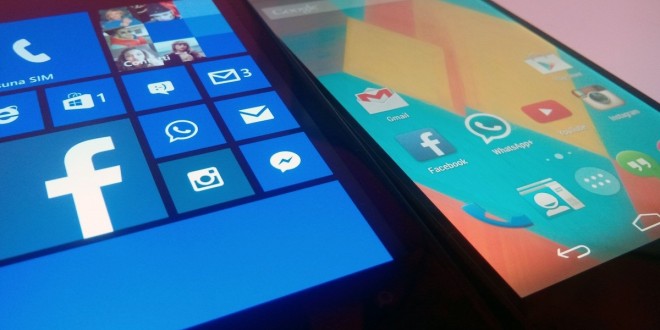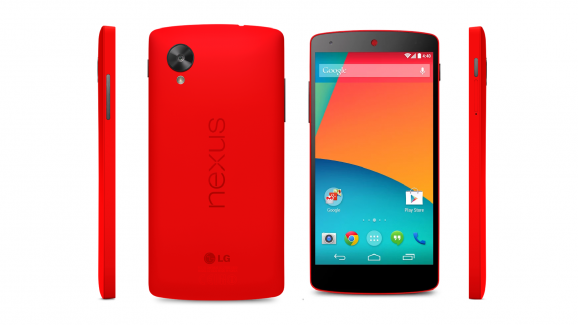The Nokia Lumia 1020 and Nexus 5 were two of the most prized devices of 2013 and still are the favorite handsets of many tech enthusiasts out there. The Nexus 5 was launched by Google in October 2013, whilst the Lumia 1020 was launched in July last year, both phones becoming quite successful in the niches they cater to.
The Lumia 1020 was made with photography enthusiasts in mind, attempting to offer an affordable and powerful phone equipped with the best smartphone camera out there. Ever since the Lumia 1020 was launched, it still holds first place in the top smartphone cameras. It’s not surprising that nobody has accomplished such a feat yet, since the Lumia packs a whopping 41 MP camera sensor, 38 MP effective. 7152*5368, Carl Zeiss optics, OIS, auto and manual focus, Xenon and LED flash, 1/1.5″ sensor, 1.12 µm pixel size, featuring PureView, geo-tagging, face detection, dual capture, panorama which can capture 1080@30fps video with OIS and lossless digital zoom.
That’s no standard smartphone camera, everybody can agree on that and you can get a hold of the Lumia 1020 with the excellent camera for about $400, which is an awesome price to pay for such a powerful device. After the handset was launched, it became a success and a leader in its category, the same as the Nexus 5 from Google. The Nexus 5 can’t compete with the Lumia 1020 camera, naturally, but the question on the minds of many is how can they be comparable, aside from the shooters.
The Nexus 5 was launched in an attempt to offer affordable smartphones packing not only powerful specs, but stock Android, which is the favorite UI and OS of many smartphone users out there. Stock Android is the most praised feature of the Nexus 5 and that’s what turned it into one of the most popular smartphones in the U.S. Receiving direct updates from Google without having to wait for carriers to dispatch them is a sought after feature in many smartphones and the Nexus 5 offers just that.
The Nexus 5 and Lumia 1020 don’t have much in common, and the Nexus 5 is a bit cheaper, selling for about $340 and $400 off-contract based on storage configuration. The Nexus 5 camera is not much compared to the Lumia 1020 41 MP shooter, packing an 8 MP rear shooter, 3246*2448 pixels, autofocus, OIS, LED flash featuring geo-tagging, touch focus, face detection, photo sphere, HDR and dual recording. In terms of front facing cameras, neither smartphone has much to boast with, the Lumia 1020 packing a 1.2 MP front shooter, whilst the Nexus 5 has a 1.3 MP camera, definitely not the selfie-phones of the year.
The Lumia 1020 comes with Windows 8 upgradable to Windows 8.1, and having the Microsoft OS improves performance and battery life greatly over the Nexus 5, even though that exceptional camera does require some wait-time when processing images. Nonetheless, most user reviews say that the 2300 mAH battery on the Lumia 1020 offers at least two days of use if not abusing the camera, whilst the Nexus 5, with its 2300 mAH camera makes it into the night with Android 4.4.4 KitKat.
The Nexus 5 has a lower battery life than the Lumia 1020 mostly because of the display it packs. The Nexus has a 5 inch True HD IPS+, 1080*1920 with 445 ppi, which compared to the Lumia’s 4.5 inch AMOLED 768*1280 332 ppi display justifies why it might drain more battery than the display on the Lumia. Since the Nexus’ display is bigger and needs more power to keep a considerably larger amount of pixels running, it’s no surprise that the display drains the battery. Nonetheless, the Nexus 5 does offer a beautiful screen which is brighter and sharper than that of the Lumia 1020.
The Lumia 1020 is 30 grams heavier than the Nexus, weighing around 160 grams, mostly due to the camera setup and battery. It’s also a thicker phone, naturally, but not as much as to be bothersome. The Nexus 5 is close to 9 mm thick, while the Lumia 1020 passes the 10 mm thickness mark. The build of both phones is polycarbonate, but the Lumia 1020 feels and looks a bit better than the Nexus 5, according to most user reviews. The Lumia 1020 might have a smoother back and a better grip, but the big camera on its back might bother some.
Both smartphones benefit from Corning Gorilla Glass 3 protection and have been reported to be appropriately durable in rough environments. The Lumia 1020 has a plus when it comes to speakers, since it packs Dolby Digital Plus speakers. Sadly, neither handset has a microSD card slot, so the user of the Nexus 5 will have to make due with either 16 or 32 GB storage space, whilst the Lumia 1020 owners will benefit from a 32 GB version and a Telefonica exclusive 64 GB storage configuration.
Both handsets have NFC built-in, but neither have IR blasters, which is a minus for both of the phones and the Lumia 1020 has a stereo FM radio built in, which lacks on the Nexus 5. As for processing power, the Nexus 5 overpowers the Lumia 1020 dual core Snapdragon CPU clocked at 1.5 GHz and Adreno 225 GPU with its quad core Snapdragon 800 CPU clocked at 2.3 GHz and Adreno 330 GPU. Both handsets have 2 GB RAM available, but the Nexus 5 might make more use of that memory than the Lumia 1020. Even though the Nexus 5 CPU and GPU are better builds, the Windows OS on the Lumia 1020 allows the phone to run as fast as the Nexus 5, so it’s not necessarily a deal-breaker.
All things considered, both devices are excellent phones in their category, packing enough power to cater to most users and have been priced quite attractively. When trying to choose between these two instances, the main difference remains the camera and the OS. For those of you who want a whopping 41 MP camera capable of much more than any other smartphone on the market and Windows OS is something they feel comfortable with, the Lumia 1020 is the clear choice, because it runs smoothly and offers great battery endurance. For those of you who love the stock Android experience and would rather choose processing power over camera features, should definitely go for the Nexus 5 from Google.
If these were the only smartphones available to you, and you find yourself without a phone in a big city, which would you choose? Keep in mind that navigation on the Lumia 1020 is provided by Nokia HERE, considered superior to Google Maps. I would choose the Nexus 5 because I confess, I’m an Android fan and I love the stock Android experience Nexus devices offer. I’m a bit undecided though, because the Lumia 1020 would fare better in a new environment with its battery and camera. What do you think?
 Load the Game Video Games, Reviews, Game News, Game Reviews & Game Video Trailers
Load the Game Video Games, Reviews, Game News, Game Reviews & Game Video Trailers





